A new tool for artists or an existential threat?
OPENAI
In late 2022, OPENAI introduced a range of artificial intelligence tools for use by the public.
The company allowed access to DALL·E 2 claiming it to be “a new AI system that can create realistic images and art from a description in natural language.”
Some artists were, and still are, horrified.
Yet, for centuries painters have utilized technology for their work.
Some have been very secretive about these techniques, Vermeer being a good example. Antonie van Leeuwenhoek, who was regarded as the finest maker of lenses in the world, developed an optical device that enabled Vermeer to project three-dimensional forms onto a flat surface.
In later life, as his eyesight deteriorated, Degas experimented with photography, thrilling in its results, seeing its potential for artistic expression that could be extended to painting. Many frowned on this, claiming it a threat to the sanctity of art, a view still held by several teachers when I studied painting.
Despite these existential fears, 20th-century artists accelerated this trend for using modern technology until the current crop collided with AI.
A solution to a problem – using AI as a camera
I had no reservations about exploring the technology, hopeful I could find a use for it. This coincided with a period of ill health. I suffer from ankylosing spondylitis, and arthritis that affects my hands. Recently, it also prevented me from walking. As a result, I could no longer venture out and take photographs, which I have always used to develop ideas.
As a student, I learned how, in his later years, Matisse was also stricken with arthritis. Instead of painting, he began making his famous paper cut-outs. What I did not learn until decades later was that he employed glamorous assistants to help him in the studio. Unfortunately, I was not able to afford a Matisse-like solution. Instead, I wondered, could AI act as a substitute?
The short answer to this question was yes. The longer answer involves some explanation., and in this article I will provide an example of how I used the technology allied to some old-school skills.
The appliance of science
First, a little personal background. After leaving school, I took a degree in Aeronautical Engineering.
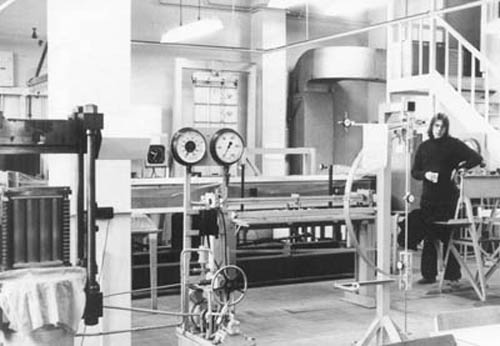
Aircraft Structures Lab, The City University, 1973
At that time, engineers were taught FORTRAN, a computing language for crunching numbers. It is fair to say that I did not warm to it. After graduating in 1973, I turned away from science and technology, finally discovering art and a desire to become a painter. Then, in 1998, I was introduced to the Internet, which in turn led me to both study and teach Computer Science. So, in a nutshell, I know something about digital technology. It also means I can write computer code in several languages, one of which is JavaScript.
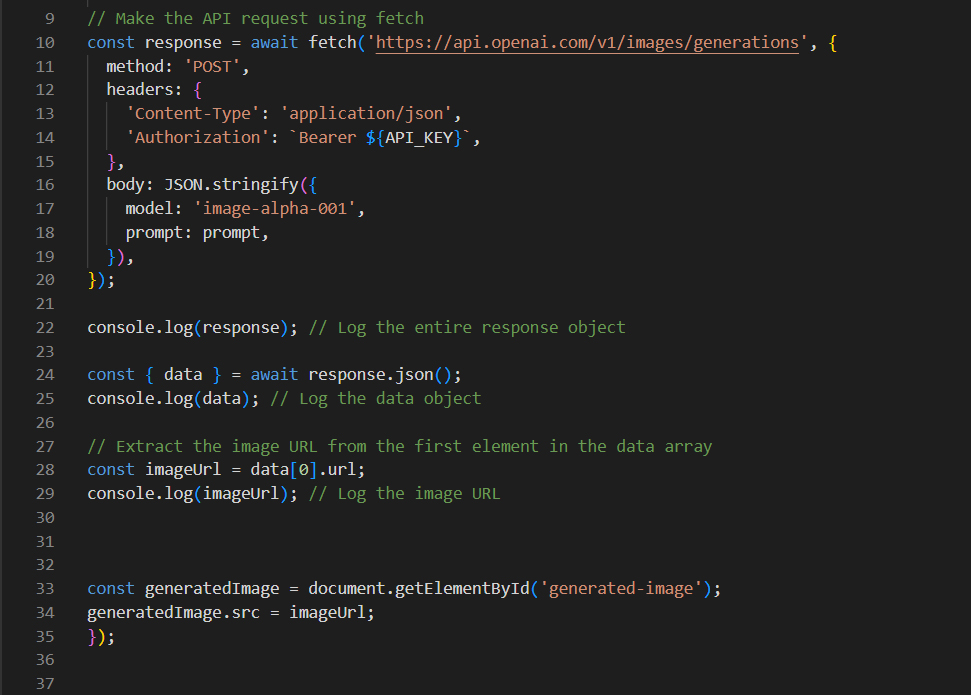
JavaScript code used to create a web app that interfaces with OPENAI
This enabled me to develop web forms that took data from the user (me) and input that data into OPENAI which in turn generated images and returned them to me.
Strengths and weaknesses
Learning how to use AI requires an understanding not only of its strengths but also its limitations. Although I am convinced these glitches will disappear in future models, earlier versions made laughable mistakes. If you wanted three-legged men or horror-story hands with fingers like mangled bananas, or an arm with a shoe on the end of it, OpenAI DALL·E-2 did the trick. I shoukd add that I have yet to try the current version, which at the time of writing is DALL·E-3.
However, I wasn’t looking for accuracy. I simply needed to create compositions, poses, scenes, and lighting effects. I could fix the glitches with old-school skills, and a few painkillers, namely being able to draw human figures. There was also the non-trivial matter of using one’s imagination. The artist needs an idea of the subject matter before those thoughts are translated into words that can be entered into the AI interface.
An example of using DALL·E-2
Don Quixote
In early 2023, I used DALL·E-2 to help construct a digital print. I took inspiration from Don Quixote, which I was reading at the time. I also knew of the ballet. So with that in mind I decided to create a scene from an imaginary ballet, which would be set in a desert at night.
The Dancers
I used DALL·E-2 to produce dozens of images of dancers. Most were unusable. But a few passed muster for further work.

Image produced with DALL·E-2
Having selected an image, I then used a digital pen linked to Photoshop to redraw the dancer, including changing the costume, adding facial features and hands.

Detail of male dancer in final print
The Sculpture
For a large sculpture, which I invented for the staging, I began with a small drawing.
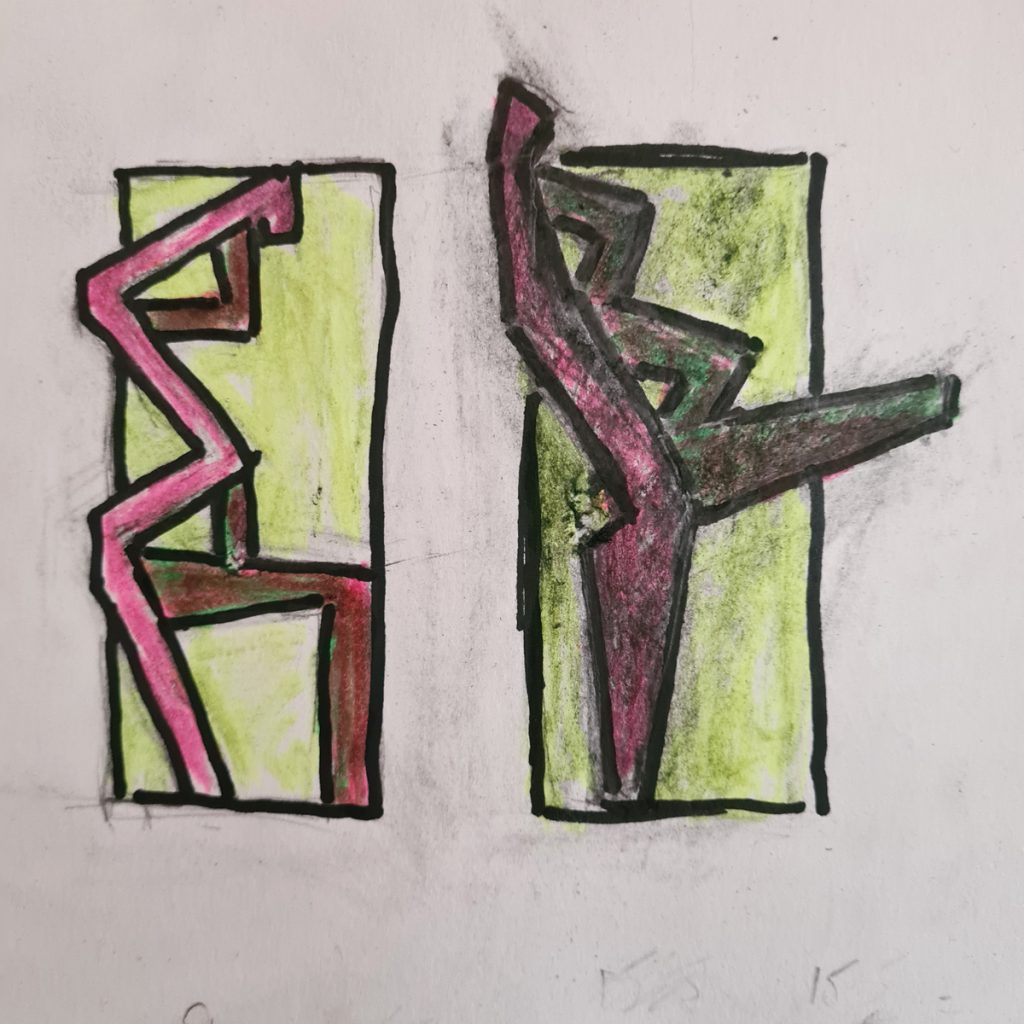
Two dancers – Felt tip pen on paper
Next, I made a macquette from cardboard before photographing it, and then pixel-painting surfaces on to it, also using Photoshop.

cardboard macquette of two abstracted dancers
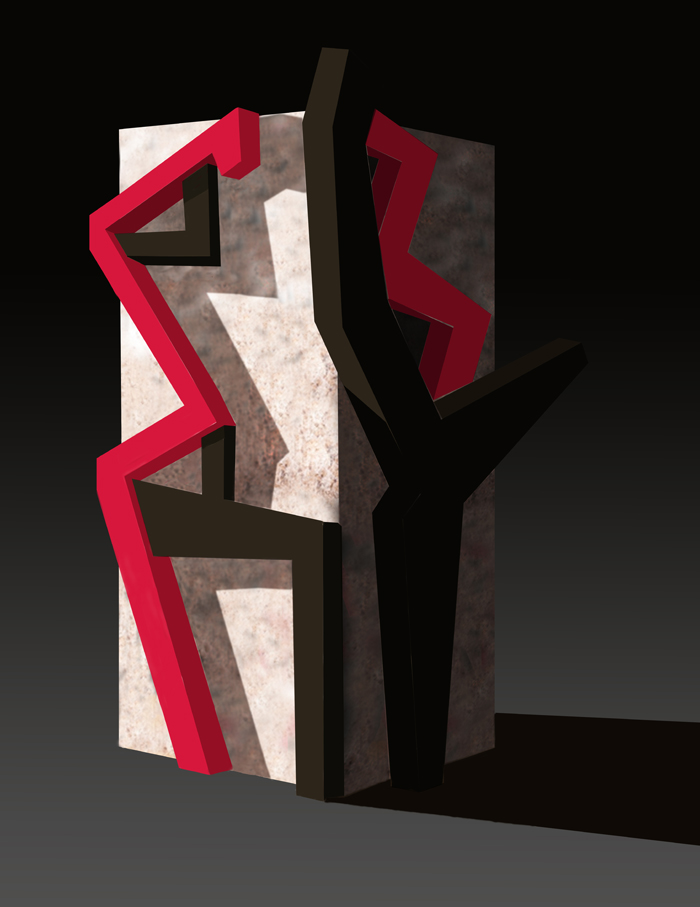
Photoshop image of the sculpture
The Windmill
I used DALL·E-2 to produce more than fifty images of illuminated windmills, before settling on one.
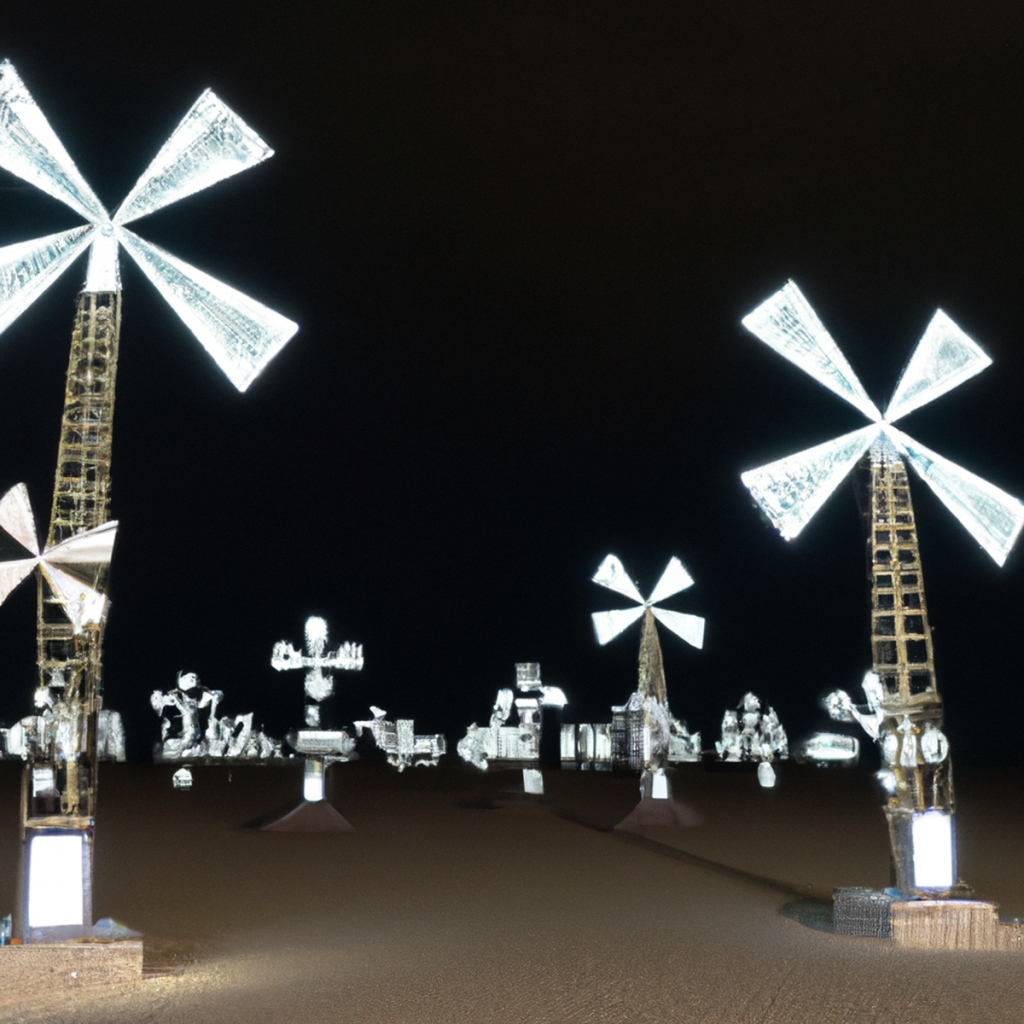
Image produced with DALL·E-2
Constructing the Final Image
With these pieces of imagery, I was able to work towards a final image.
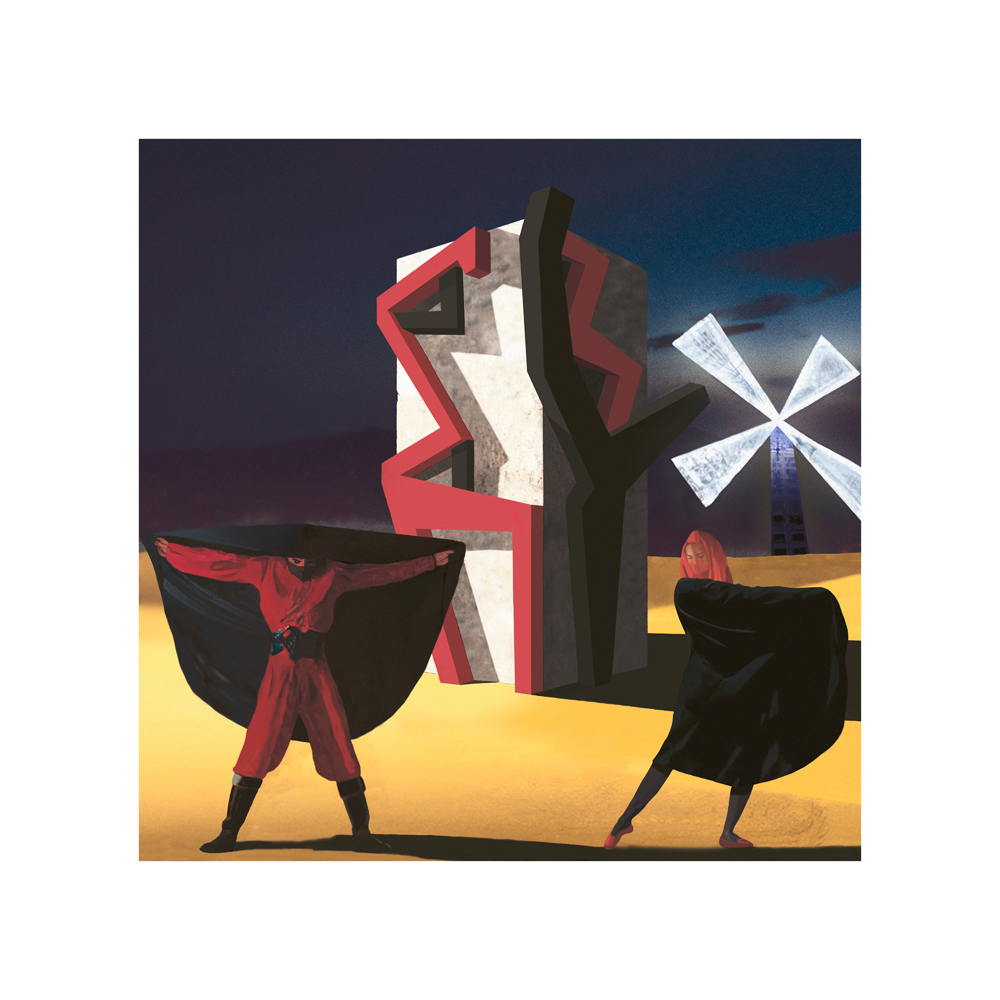
In the Mind of Don Quixote, 76 cm x 76 cm, Giclée on Hahnemühle German Etching Paper, 2023
There were many iterations, meaning more pixel-painting, before committing the image to print, and several proofs were needed before arriving at a satisfactory result.
Midjourney
OPENAI proved to be too restrictive. At that stage every rendered image had an aspect ratio of 1:1. Instead, I chose to investigate Midjourney, soon discovering results that were extraordinary.
However, the user’s input is crucial to achieving satisfactory results. Is it day or night? What is the setting? What is the aspect ratio? Do you wish to employ specific camera angles and lenses? Which palette would you like to use? What clothes are people wearing? Midjourney can makes guesses, but the results are unlikely to be of use. Moreover, Midjourney cannot cope with too many instructions. One has to build pieces of the jigsaw. This perfectly acceptable for someone who enjoys making collages.
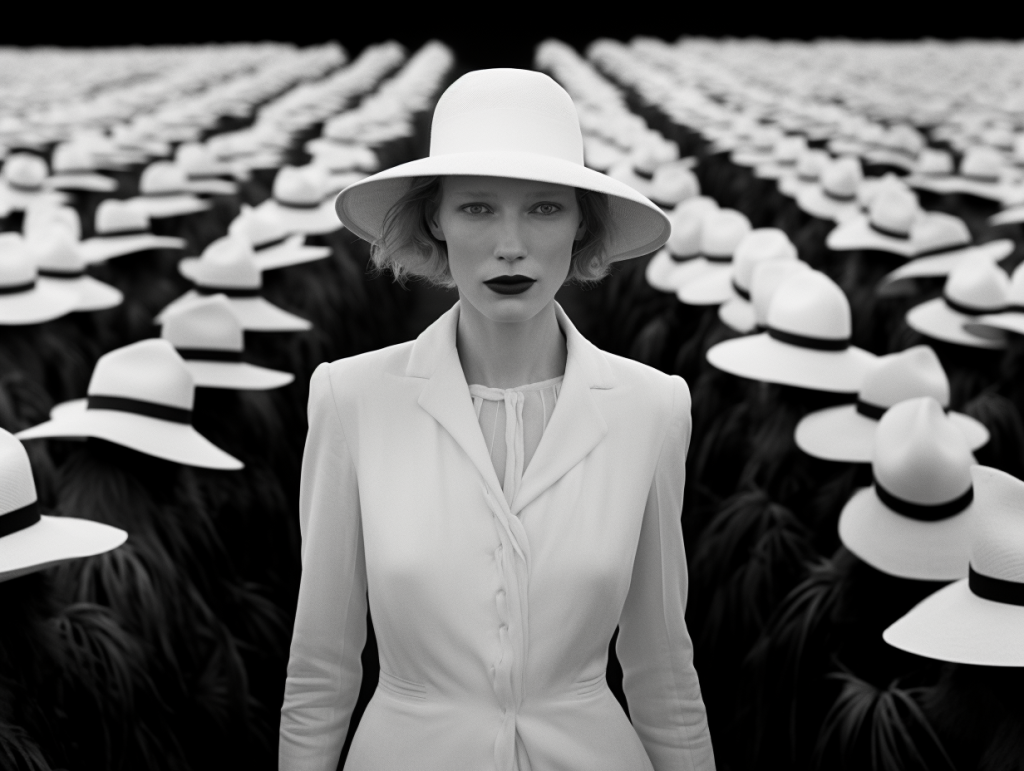
And the prompt used to create it:
/imagine prompt: a full-length body image | GENRE neo-noir, black and white | EMOTION: mysterious | SCENE: A field of white Panama hats. Cate Blanchett in a white dress and straw hat | CAMERA MODEL: Canon EOS R5 | CAMERA LENS: Nikon AF-S NIKKOR 24-120mm f/4G ED VR Lens | SPECIAL EFFECTS: ULTRA-detailed, ultra-photorealistic | TAGS: 8k, award-winning photograph, intense, film still cinematic still, cinematic shot, movie shot, footage from movie, action movie footage, movie scene, cinematic movie scene, --ar 4:3 --v 5.2
Note that in the above example, I instructed Midjourney to use Cate Blanchett as a model. Midjourney is better at producing a type of face, and body, if it has a famous person to work with, rather than:
A willowy blonde woman in her early fifties with prominent cheekbones and large eyes
Even so, Midjourney does produces unexpected results. Yet this apparent randomness can inspire new directions, which I find exciting.
I like to create groups of images based on a single idea. These often run to hundreds before I take the next step, which, as I explained earlier, is to use Photoshop.
Processing AI images takes many hours of looking, thinking, combining, and editing until I have produced an image that looks a likely candidate for a painting. Inevitably that image will change during the painting process.

Sold on, or sold out?
I really enjoy using AI and I expect to continue using it. Not only does it save me from walking, and with that a degree of physical pain, it gives me a sense of excitement when seeing an idea quickly unfold as a series of images.
If nothing else, AI has helped me rediscover a joy for making art, something I felt was irretrievably lost.
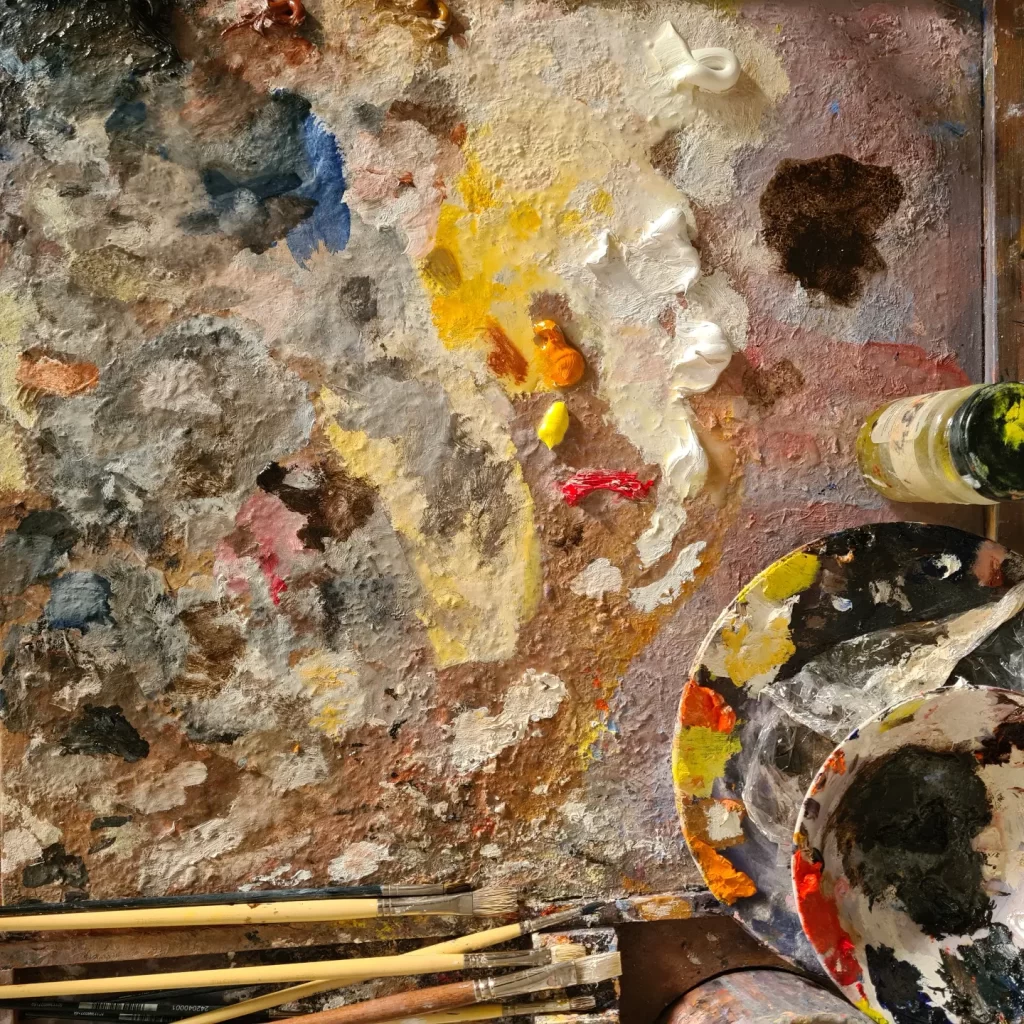
To all the naysayers, I can only claim that it works for me, an artist who chooses to embrace new technology as well as practicing traditional skills, like daubing oil paint with hogs hair brushes.